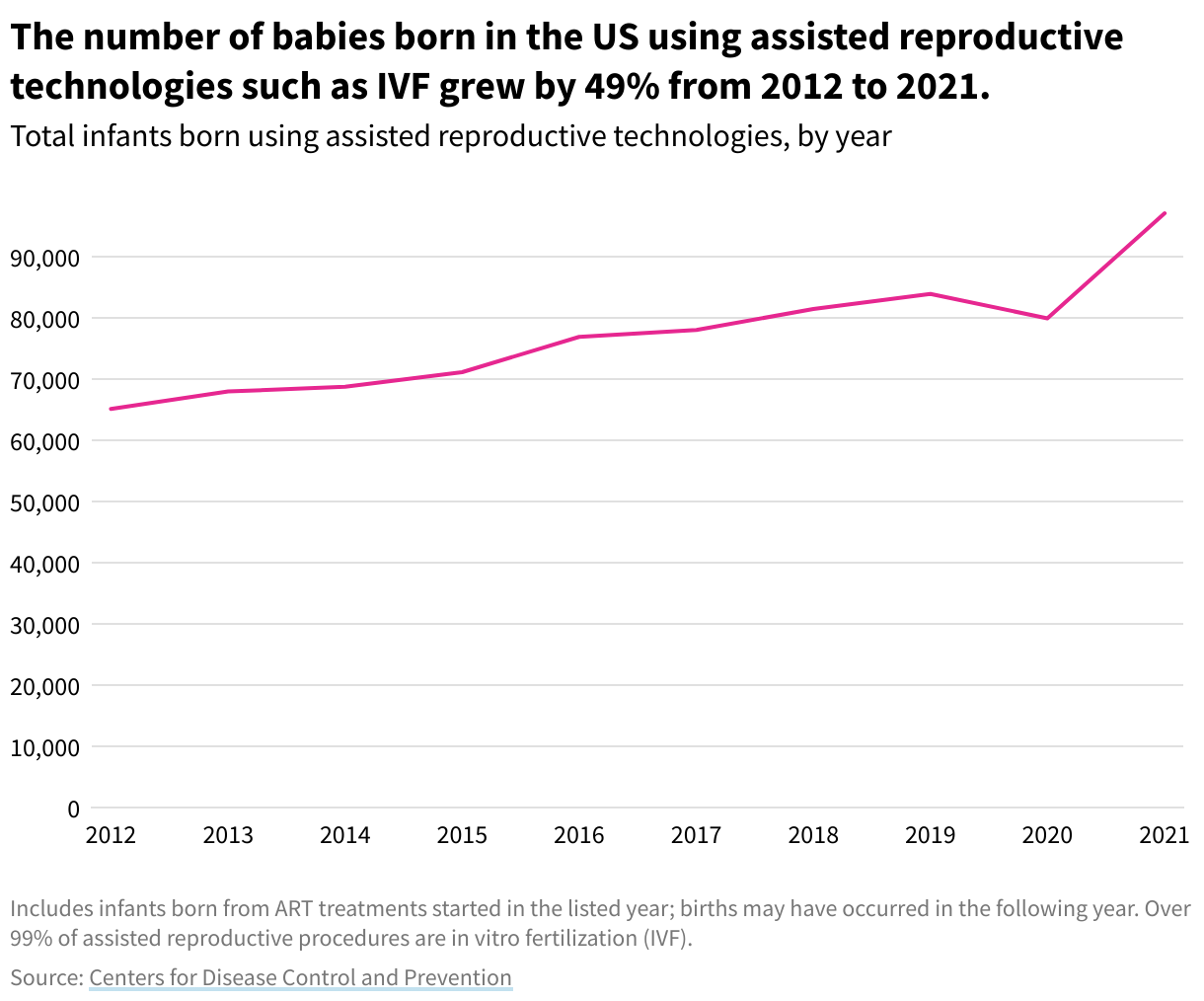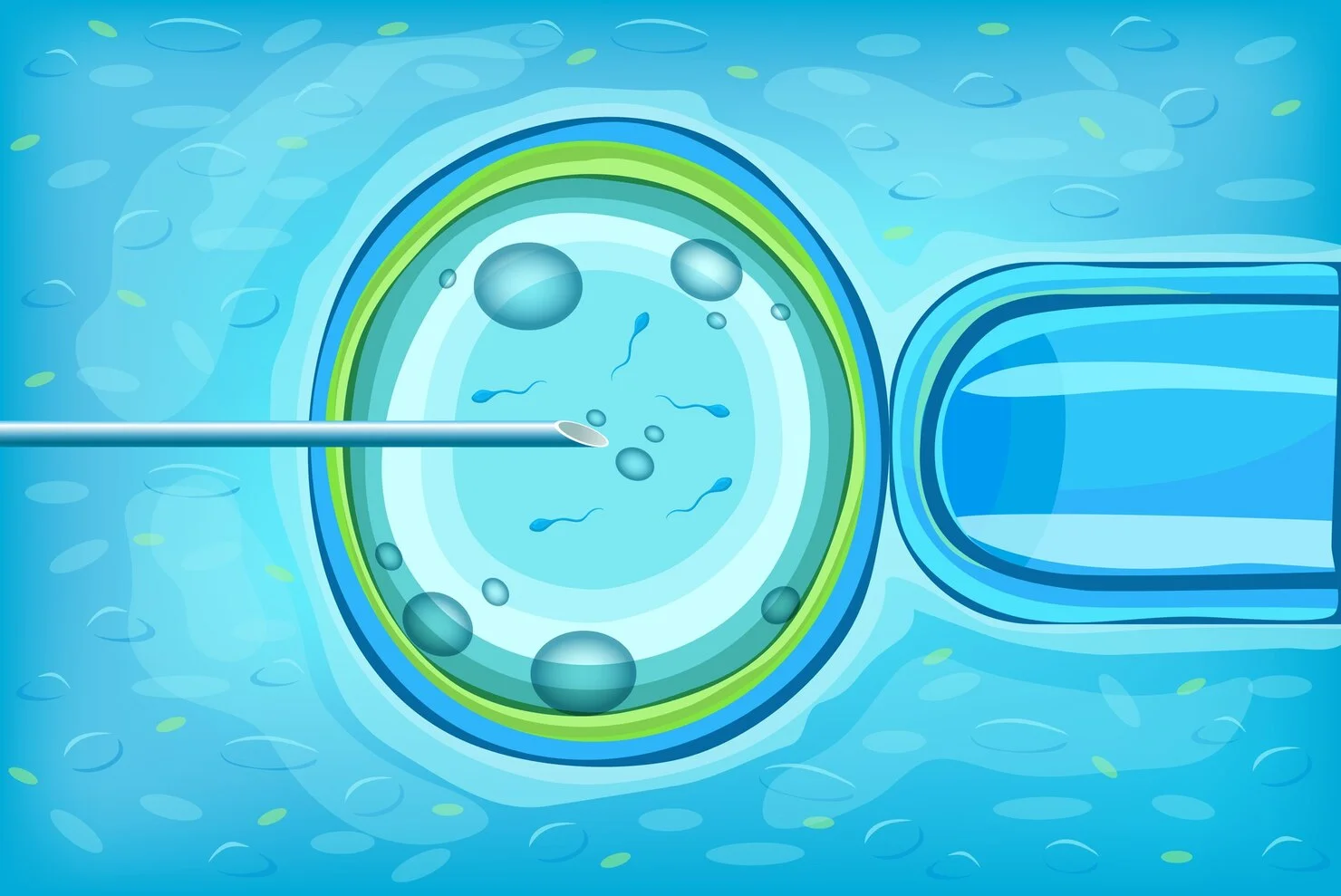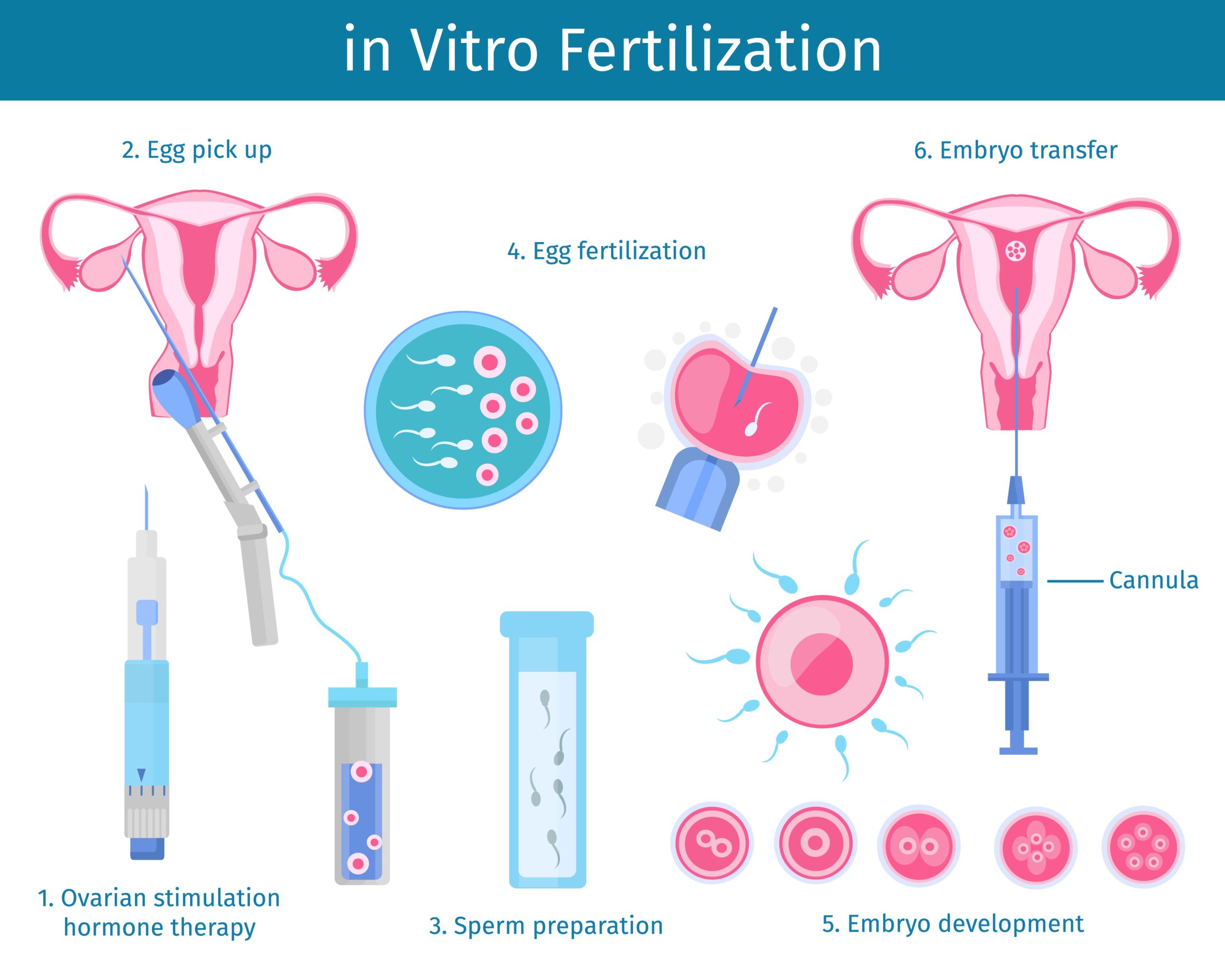
The Difference Between IUI and IVF: A Deep Dive into Fertility Treatments
April 18, 2025How Many Births Are From IVF? A Deep Dive Into the World of In Vitro Fertilization
Imagine a couple sitting in a quiet café, sipping coffee, dreaming of the day they’ll hold their baby. For some, that dream comes naturally, but for others, it’s a journey filled with hope, science, and a little bit of magic called in vitro fertilization (IVF). You’ve probably heard of IVF—maybe from a friend, a TV show, or even a celebrity story—but do you know how many babies actually start their lives this way? Spoiler alert: it’s more than you might think!
In this blog, we’re peeling back the curtain on IVF births. We’ll answer the big question—how many births are from IVF?—and dive into the juicy details that don’t always make it to the headlines. From surprising stats to the emotional rollercoaster of the process, plus some fresh research and practical tips, this is your ultimate guide to understanding IVF’s role in today’s world. Let’s get started!
What Is IVF and Why Does It Matter?
IVF stands for in vitro fertilization, a fancy way of saying “fertilization in a lab.” Here’s the gist: doctors take an egg from a woman, mix it with sperm in a petri dish, and if all goes well, an embryo forms. That tiny embryo is then placed into the uterus, hoping it grows into a baby. It’s like giving nature a helping hand when things don’t work out on their own.
Why People Turn to IVF
IVF isn’t just for couples who can’t conceive naturally. It’s a lifeline for all kinds of folks:
- Couples struggling with infertility (about 1 in 7 couples face this!).
- Single parents or same-sex couples using donor eggs or sperm.
- People freezing their eggs for later—like a backup plan for busy lives.
- Families avoiding genetic diseases with special testing.
A Quick History Lesson
IVF isn’t new. The first “test-tube baby,” Louise Brown, was born in 1978 in England. Since then, it’s exploded. Today, millions of babies owe their lives to this science. But how many exactly? Stick around—we’re getting there!
How Many Births Are From IVF? The Numbers You Need to Know
Let’s cut to the chase: how many babies are born through IVF? The answer depends on where you look, but the numbers are eye-opening.
IVF Births in the United States
In the U.S., IVF accounts for about 1-2% of all births each year. That might sound small, but it adds up fast. According to the Centers for Disease Control and Prevention (CDC), around 97,000 babies were born from IVF in 2021 alone. That’s enough to fill a small city! Over time, experts estimate that 3.6 million Americans alive today started as IVF embryos. Crazy, right?
Around the World
Globally, IVF is even bigger in some places:
- Denmark: A whopping 1 in 8 babies (12.5%) comes from IVF. Why? They’ve got great healthcare coverage for it.
- Australia: About 4.1% of births are IVF babies.
- China: It’s closer to 1.7%, but growing fast as more people try it.
Since 1978, over 8 million babies worldwide have been born via IVF. That’s more than the population of New York City!
What’s Driving These Numbers?
- Aging Parents: People are waiting longer to have kids—sometimes into their 30s or 40s—when fertility drops.
- Better Tech: IVF success rates keep climbing thanks to new tools and tricks.
- Awareness: More folks know about IVF and aren’t shy to try it.
The Hidden Side of IVF: Fun Facts and Surprising Stats
IVF isn’t just about numbers—it’s full of quirks and secrets that fans of science (or just curious readers) will love. Here’s what you might not know:
IVF’s Pineapple Connection
Ever heard of the pineapple myth? Some IVF hopefuls swear eating pineapple boosts their chances. The idea is that bromelain, a chemical in pineapple cores, reduces inflammation and helps embryos stick. There’s no solid proof, but it’s become a quirky tradition—pineapple earrings and all!
Twins, Triplets, and More
IVF often leads to multiple births. Why? Doctors sometimes transfer more than one embryo to up the odds. In the U.S., about 19% of twins and 25% of triplets come from IVF. That’s why you might notice more twin strollers at the park!
The Emotional IVF Community
Online, IVF fans bond over hashtags like #IVFWarrior or #TTC (Trying to Conceive). They share stories, swap tips, and even post pics of their “two-week wait”—the nail-biting time between embryo transfer and pregnancy test. It’s a tight-knit crew!
Breaking Down the IVF Process: How It Leads to Births
Wondering how IVF turns into a baby? Here’s a step-by-step peek behind the scenes. It’s not all test tubes and white coats—there’s a lot of heart in it too.
Step 1: Boosting Eggs
- Women take meds to make their ovaries produce lots of eggs (normally, it’s just one a month).
- Fun fact: Some call this the “egg party” phase because it’s all about quantity!
Step 2: Egg Retrieval
- Doctors use a tiny needle to grab the eggs. It’s quick but can feel weird—like a pinch inside.
- Tip: Rest up after—your body just worked hard!
Step 3: Fertilization
- Eggs meet sperm in a dish. Sometimes, they use a trick called ICSI (injecting sperm right into the egg) if the sperm need a nudge.
- Science says: About 70% of eggs fertilize in natural-cycle IVF studies.
Step 4: Embryo Transfer
- A few days later, the best embryo (or two) goes into the uterus via a thin tube.
- Success tip: Stay calm—stress doesn’t help, even if it’s tempting to Google everything!
Step 5: The Waiting Game
- Two weeks later, a pregnancy test tells the tale. It’s a rollercoaster—hope, fear, and maybe a baby on the way!
Success Rates: What Are the Odds of an IVF Birth?
Not every IVF try ends in a baby. Success depends on a bunch of things—age, health, even luck. Let’s break it down.
Success by Age
Here’s what the stats say about live births per IVF cycle (from 2019 data):
- Under 35: 32% chance
- 35-37: 25%
- 38-39: 19%
- 40-42: 11%
- 43-44: 5%
- Over 44: 4%
Age matters because eggs get trickier to work with as you get older. Dr. Jane Smith, a fertility expert, once said, “The egg quality is like the foundation of a house—everything else builds on it.”
Fresh vs. Frozen Embryos
- Fresh: Used right after retrieval, with a 25-30% success rate for younger women.
- Frozen: Saved for later, with similar odds and no extra risk of birth defects. Cool, huh?
Tips to Boost Your Odds
✔️ Pick a great clinic—check their success rates online (SART.org is a goldmine).
✔️ Eat well—think veggies, lean protein, and yes, maybe that pineapple!
❌ Don’t smoke—it tanks your chances.
❌ Skip stress—easier said than done, but yoga helps.
Why IVF Births Are Rising: Trends and Insights
IVF births are on the upswing, and it’s not just random. Here’s what’s pushing the numbers higher.
Delayed Parenthood
People are waiting longer to have kids. In the U.S., the average age for a first birth is now over 30 in many cities. By then, natural fertility dips, so IVF steps in.
Tech Breakthroughs
New tricks like pre-implantation genetic testing (PGT) let doctors pick the healthiest embryos. Success rates jumped from 14% in 1991 to 25% in 2012, and they’re still climbing.
Insurance and Access
Some states (like Massachusetts) cover IVF, making it easier to try. There, 4.5% of births are IVF—way above the national average. More coverage = more babies!
The Emotional Journey: What IVF Parents Really Go Through
IVF isn’t just science—it’s a wild ride of feelings. Let’s hear from the real stars: the parents.
The Highs and Lows
- Hope: Every step feels like a win—eggs retrieved, embryos made.
- Fear: What if it fails? The $12,000-$25,000 per cycle price tag doesn’t help.
- Joy: A positive test is pure magic.
One mom shared, “I cried over every needle, but when I held my twins, it was worth it.”
Hobbies That Help
IVF folks find cool ways to cope:
- Journaling: Writing down fears keeps them in check.
- Crafting: Knitting baby booties (even before the test) is a fan fave.
- Support Groups: Chatting with others who get it is a lifeline.
Dr. Emily Carter, a psychologist, notes, “Connecting with others turns isolation into strength.”

IVF and Multiple Births: Twins and Beyond
IVF is famous for twins—and sometimes more. Why does this happen, and what’s it mean?
The Twin Boom
- About 1 in 5 IVF pregnancies results in twins because doctors might transfer two embryos.
- Triplets are rarer (1 in 4 of all triplets), but still linked to IVF.
Risks to Watch
✔️ Twins are cute, but they’re more likely to be premature or low birth weight.
✔️ Moms face higher risks too, like high blood pressure.
❌ More embryos don’t always mean better odds—clinics now push “single embryo transfer” to keep it safer.
A Parent’s Take
“I wanted one baby, but got two!” laughs an IVF dad. “It’s chaos, but the best kind.”

Fresh Research: What’s New in IVF Births?
Science doesn’t sleep, and IVF keeps evolving. Here’s the latest scoop from 2023-2025 studies.
Mini-IVF: Less Meds, Big Results
- “Minimal stimulation IVF” uses fewer drugs, cutting costs and risks.
- A 2023 study found a 49% live birth rate vs. 63% with standard IVF, but way fewer twins.
AI Picks the Winners
- Artificial intelligence now scans embryos, picking the best ones with 90% accuracy. It’s like a crystal ball for doctors!
Fertility Preservation
- Freezing eggs early is booming. A 2024 report says women who freeze at 30 have a 70% chance of a later IVF birth.
Practical Advice: Making IVF Work for You
Thinking about IVF? Here’s how to rock it, from prep to post-transfer.
Before You Start
- Research Clinics: Look at success rates, not just ads.
- Save Up: Costs vary—shop around and ask about payment plans.
- Get Healthy: Drop junk food, add exercise—your body’s the star player.
During the Process
✔️ Follow meds to a T—set phone alarms!
✔️ Lean on friends—don’t go it alone.
❌ Don’t overdo it—rest is your friend.
After Transfer
- Chill Out: No heavy lifting for a week.
- Test Smart: Wait the full two weeks—early peeks can trick you.
IVF Myths Busted: What’s True, What’s Not?
IVF comes with tons of rumors. Let’s clear the air.
Myth 1: IVF Babies Are “Unnatural”
- Nope! They’re just conceived differently. Studies show no big differences in health or smarts.
Myth 2: It Always Works
- Sadly, no. Even top clinics fail sometimes—it’s a chance, not a promise.
Myth 3: It’s Only for Rich People
- Not quite. Costs are high, but insurance, grants, and clinics with sliding scales help.

The Future of IVF Births: What’s Next?
Where’s IVF headed? The crystal ball says more babies, better tech, and bigger debates.
More Access
- Laws might push for wider insurance coverage, boosting IVF births to 5% or more in the U.S.
Lab-Grown Gametes?
- Scientists are testing ways to make eggs and sperm from skin cells. If it works, infertility could be history!
Ethical Questions
- Will “designer babies” become a thing? Experts like Dr. Alan Ruiz say, “Tech’s ready, but society’s not.”
Your Turn: Join the IVF Conversation!
IVF births are reshaping families, and we want to hear from you!
- Have you or someone you know tried IVF? Share your story below!
- What’s your fave IVF fun fact? Pineapple fans, we see you!
- Got questions? Drop them in the comments—we’ll dig up answers.
Let’s keep this chat going—your voice matters!
